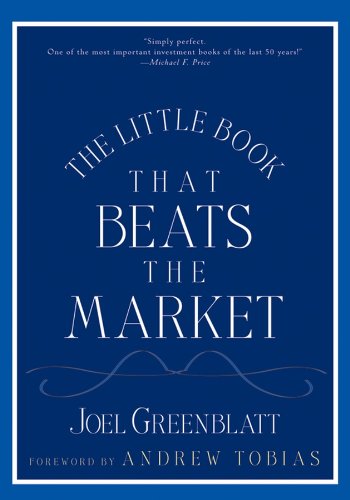
Notes on
The Little Book That Beats the Market
by Joel Greenblatt
• 2 min read
- It is generally a good idea to invest your money.
- You should buy shares in a company when they are at a discount of your estimated value.
- But you probably don’t know how to estimate that value, so don’t try. You’ll loose your money.
- Good indicators of value are ‘earnings yield’ and ‘return on capital.’ Especially when combined.
- Earnings yield can be found by dividing the earnings per share with the share price.
- Return on capital is found by how much they get back as compared to how much of their capital they invested. If they open a factory, and it earns them $200.000, and it cost them $100.00 to open it, that is a 50% return on capital - which is pretty good.
- Because you don’t know how to invest on your own, this is the magic formula that you follow.
- First, make a list of the largest 3500 companies in the US exchange. Then sort by return on capital.
- Secondly, do that again - but this time for earnings yield.
- Third, combine those two lists. This gives you a ranked list of companies, ranked by both their return on capital and earnings yield.
- The goal is to buy 20-30 stocks, such that, on average, you find good deals. So you buy the top 20-30 stocks. Any given individual stock may perform ‘not so well’, but on average, you’ll do pretty great.
- However, you should space out your investments. A good rule of thumb is to invest 30-40% of your intended investment every quarter for a year.
- This magic formula seems to have worked very well in the past. And it will probably work well in the future, because it is simply a ranking formula.
- However, it does not work for shorter timespans. But it does seem to work on longer timespans.
Liked these notes? Join the newsletter.
Get notified whenever I post new notes.